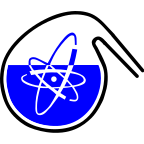Speakers
Description
Theranostic medicine is a new integrated therapeutic system which can diagnose, deliver targeted therapy and monitor the response to therapy. Many of the “neutron rich” radionuclides that emit both imaging photons as well as therapeutic beta particles and which would be potentially excellent choices for metabolic radiotherapy and theranostic applications are produced by nuclear reactor with a very low specific activity - AS. In selected cases they can be produced by bombardment of targets by charged particle beams, in No Carrier Added Form – NCA - with very high AS. In particular if the irradiations are made with deuteron beams some more indisputable advantages are obtained: higher cross sections; more radionuclide of interest production with a lower amount of the bombarding target; lower price of the target itself; advantage in the radiochemical separation because the dissolution of the target, the separation of the radionuclides are simpler, the amount of waste is lower and the radioprotection implications as for the personnel as for the discharge are contained.
At the Radiochemistry Laboratory of LASA, a wide range of high specific activity accelerator-produced radionuclides have been produced since the 70-ties in NCA form. In particular the results about the production of Re-186g and Lu-177g, Pd-103 and Zr-89 by deuteron irradiations will be presented. These radionuclides can be used for the new emerging branch of Nuclear Medicine related to theranostic nanomedicine: liposomes, dendrimers, quantum dots, iron oxide, nanomicelles, perflurocarbon and carbon nanotubes can be used as carriers for the development of radionanomedicines.

